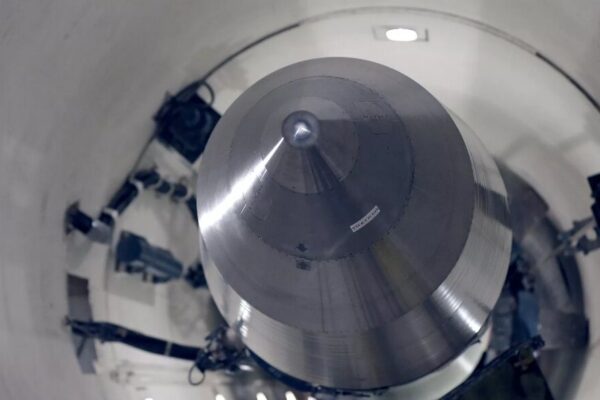While schemes have been introduced to support farmers, absence of income data raises questions about the progress towards doubling farmers’ income
Published Date – 6 February 2024, 11:59 PM

By Sagar Mekala, Devendra Poola
The union Budget 2024-25 has cast a spotlight on the Ministry of Agriculture, with an allocation of Rs 1.27 lakh crore, reflecting a slight increase from the previous fiscal. However, beneath the surface lies a narrative of nuanced reductions in key schemes, prompting a closer examination of the government’s commitment to fostering a vibrant and sustainable agricultural sector.
Cut in Pivotal Schemes
The Department of Agriculture is slated to receive Rs 1,17,528.79 crore, while the Department of Agricultural Research and Education (DARE) has been allocated Rs 9,941.09 crore. A comparative analysis of the current fiscal year reveals a modest increase in allocations, but concerns arise as reductions are noted in pivotal schemes. The flagship crop insurance scheme for 2024-25 sees a decrease, with an allocation of Rs 14,600 crore, down from Rs 15,000 crore in 2023-24. The PM-AASHA scheme, designed for crop procurement at minimum support prices, is also subject to a reduction, down to Rs 1,738 crore from Rs 2,200 crore in the previous year.
Surprisingly, the cash transfer benefit under the PM-Kisan scheme remains stagnant at Rs 60,000 crore. The national mission on natural farming, aimed at reducing chemical inputs, receives only Rs 366 crore for 2024-25, a notable decline from Rs 459 crore in 2023-24.
Empowering Women
Acknowledging the pivotal role of women in agriculture, the Budget underscores efforts to empower women farmers. Initiatives led by the Central Institute for Women in Agriculture under the Indian Council of Agricultural Research (ICAR) aim to address challenges facing women in agriculture and enhance their participation in decision-making processes. This multifaceted approach aligns with the broader goal of creating an inclusive and equitable agricultural landscape.
Fertilizer Subsidy, Trends
The fertilizer subsidy saw a decrease from Rs 1.89 lakh crore (RE, FY24) to Rs 1.64 lakh crore (BE) in FY25, signalling a reduction of 13%. This decline is attributed to various factors, including falling international prices, government’s emphasis on bio and organic fertilizers and increased usage of nano urea. The global shift towards organic farming and regulatory changes may further impact fertilizer demand, with projections indicating a 20% reduction by 2030. Rationalising fertilizer subsidies becomes imperative to minimise diversion to non-agricultural sectors. Shifting from subsidising urea prices to direct cash transfers for farmers would not only reduce leakages but also redirect funds towards developmental initiatives such as PM-KISAN.
Moreover, the fertilizer subsidy, managed by the Ministry of Chemicals and Fertilisers, has experienced fluctuations, with a 22% reduction in 2023-24 compared to the revised estimates of 2022-23. Rising global prices of fertilisers, particularly urea, have contributed to this trend, prompting the need for strategies to mitigate import dependence and modernise manufacturing plants. Irrigation practices and water conservation remain critical components of agricultural sustainability. The Pradhan Mantri Krishi Sinchayee Yojana, emphasising micro-irrigation techniques, strives to address water wastage and promote efficient water use. However, challenges persist, especially in water-scarce districts where crops like paddy and sugarcane are grown.
Income and Welfare
The government’s focus on doubling farmers’ income necessitates a holistic approach, as observed in the recommendations of a committee formed in September 2018. This committee underscored the need to address input prices, input utilisation and output prices to ensure a substantial increase in farmer incomes. While schemes like PM-KISAN, Pradhan Mantri Fasal Bima Yojana and Pradhan Mantri Krishi Sinchayee Yojana have been introduced to support farmers, the absence of recent income data raises questions about the progress towards doubling farmers’ income.
Agricultural GDP, a key indicator, has doubled approximately every eight years in real terms, but the growth has been volatile. The agricultural gross value added (GVA) at current prices doubled from Rs 25 lakh crore to Rs 51 lakh crore between 2015-16 and 2022-23, reflecting a growth of 11%. However, the sector’s estimated growth rate of 3% in 2022-23 raises concerns compared with the 4% growth in 2021-22.
MSP, Marketing
The minimum support price (MSP) mechanism continues to play a pivotal role in ensuring fair returns to farmers. The allocation for the MSP mechanism in 2024 demonstrates sustained government support for the farm sector, including a consistent increase in MSP for 22 crops. Aligning with the National Commission on Farmers’ recommendation from 2006, the ministry has consistently raised MSP to ensure a minimum 50% return on production costs. Efforts to enhance agricultural marketing and ensure fair returns are commendable, but challenges persist.
Agricultural markets regulated by the Agriculture Produce Marketing Committees (APMCs) face issues like limited traders leading to cartelisation, high commission charges and market fees. Reforms such as digitalisation, contract farming and futures markets have been proposed, but their implementation and effectiveness remain subjects of scrutiny.
Credit, Indebtedness
Access to affordable and timely credit is vital for profitable farming. While institutional credit for farmers has seen an annual growth rate of 7.8% in the past decade, concerns arise regarding the proportion of credit utilised for asset creation. Agricultural indebtedness has risen, with half of all agricultural households being indebted as of December 2019, emphasising the need for a balanced approach to credit utilisation.
Inclusive Future
As the agricultural Budget unfolds its contours, it presents a complex tapestry of allocations, reductions and policy directions. The challenges faced by the agricultural sector, from fertilizer subsidies to income disparities, demand a holistic and multifaceted approach. The upcoming July Budget holds the promise of major announcements that could reshape the trajectory of Indian agriculture, paving the way for a more vibrant, sustainable, and inclusive future. The intricate dance between policy decisions and on-ground realities will ultimately determine the success of these endeavours, with the farming community at the heart of this unfolding narrative.









